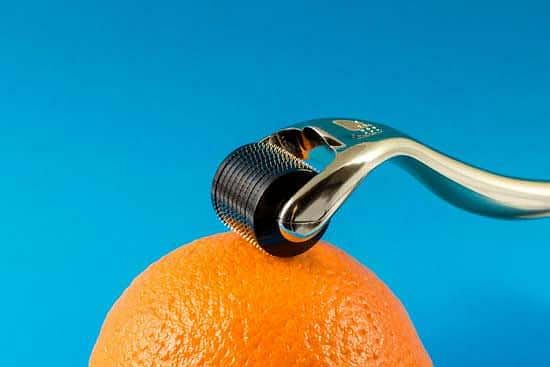A Scientific Guide To Dermarolling
The process of using the derma roller is called micro-needling, which has gained prominence in recent years in almost every dermatology clinic.

What is a derma roller?
It is a simple handheld single-use device containing a roller with small needles (microneedles) of varying sizes on one end attached to a handle. Needle sizes vary between 0.5 to 1.5 mm. 5
What is the purpose of a derma roller?
Derma roller is a commonly used instrument which is used as a method to manage and treat androgenic alopecia. The process of using the derma roller is called micro-needling, which has gained prominence in recent years in almost every dermatology clinic dealing with trichology (hair related problems).
Using a derma roller for your hair is extremely beneficial. A derma roller is a hair treatment that controls hair loss and regrows your lost hair.
How does the derma roller work?
Dermaroller works by causing controlled injury to the various layers of your scalp’s skin. This, in turn, helps release various growth factors as the healing response kicks in.
In the context of hair, microneedling works by stimulating the dermal papillae which is the site of expression of various hair growth-related genes. Microneedling works by stimulation of stem cells and inducing activation of growth factors. It stimulates the regeneration of hair by stimulating the various follicular cells and growth factors.
Microneedling Procedure
The scalp is surgically cleaned with betadine and normal saline. A derma-roller of 1.5 mm sized needles is gently rolled over the affected areas of the scalp in longitudinal, vertical, and diagonal directions until mild erythema is noted; this is considered as the endpoint of the procedure.
The procedure is generally repeated every two to three weeks, total number and duration of sessions being dependent on the rate of hair growth and the desired end result. When combined with platelet-rich plasma therapy, the procedure can be repeated monthly until the desired result is obtained. Maintenance sessions are required henceforth to counter the reversal of results obtained.
Research results: How does derma roller fair compared to other existing treatment modalities?
A blinded control trial found significantly better improvement in new hair growth over baseline in a patient treated with minoxidil 5% and derma roller compared to minoxidil 5% alone when evaluated at the end of 3 months of treatment 1 The study basically underlies the fact that derma roller gives a superior result when used with minoxidil as compared to minoxidil alone.
In another study when derma roller was combined with platelet-rich plasma therapy, it was found to have a much more significant improvement in hair density compared to minoxidil alone.3 It signifies the complimentary role platelet-rich plasma therapy plays with derma roller in significantly improving hair fall when combined with minoxidil as compared to minoxidil alone.
Side effects of Derma Roller
Pain and mild bleeding at the treatment area are expected side effects. Topical or local anaesthesia is generally used to minimise pain and make the procedure comfortable. Infections at the treatment site can occur if proper post-procedural care is not adhered to which is generally explained by the treating physician during counselling or at the conclusion of the session. A thorough history, examination and routine tests are essential in establishing a treatment line and avoid unnecessary complication.
Active infection in the treatment area, bleeding disorders, patients on oral anticoagulants (blood thinners) are absolutely contraindicated. Microneedling should not be done in pregnant patients, patients with uncontrolled diabetes and with keloidal tendency.
Dermaroller is a safe and effective therapeutic tool in the management of androgenetic alopecia. When used with caution following proper guidelines in conjunction with other procedures and /or oral /topical agents it can go along way in effectively increasing the hair growth in alopecia in a sustained manner resulting in enhanced patient satisfaction.
References
- Satish Doddaballapur, July 2009; Microneedling with Dermaroller- (PDF) Microneedling with Dermaroller (researchgate.net)
- Andre Revia; Dermaroller Manual- (14) (PDF) Dermaroller Manual | Andre Revia - Academia.edu
- Murad Alam, Sandra Han, Marisa Pongprutthipan, Wareeporn Disphanurat, Rohit Kakar, Michael Nodzenski, Natalie Pace, Natalie Kim, Simon Yoo, Emir Veledar, Emily Poon, and Dennis P West, August 2014; Efficacy of a needling device for the treatment of acne scars: a randomized clinical trial- Efficacy of a needling device for the treatment of acne scars: a randomized clinical trial - PubMed (nih.gov)
- R M Fertig, A C Gamret, J Cervantes, and A Tosti, December 2017; Microneedling for the treatment of hair loss?- Microneedling for the treatment of hair loss? - PubMed (nih.gov)


